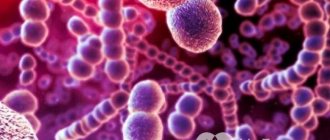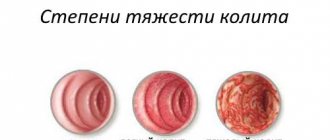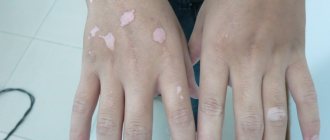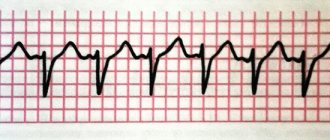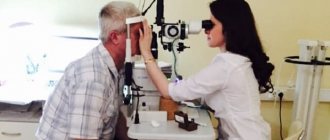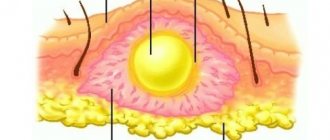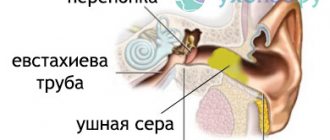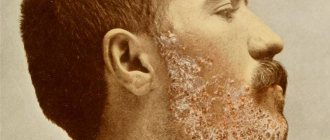To understand what tachycardia is, why it occurs and how to treat it correctly, you must first understand why the heart contracts this way and not otherwise. It is logical to assume that there is some guiding center that sets the rhythm and regulates the contraction of the heart, otherwise each part of it, and even each individual cell, would contract independently, which would make it impossible for the consistent movement of blood through the chambers of the heart.
This guiding center is the sinus node. It is located where the superior vena cava enters the right atrium. It is here that special impulses are normally formed, which spread through the conduction system throughout the chambers of the heart and cause them to contract in the correct order. The number of impulses formed in the sinus node determines the number of heart contractions. If more impulses are generated than necessary, the heart rate will in turn increase.
Classification
A rapid heartbeat does not always indicate that some problems have arisen in the body and it is necessary to urgently run to the doctor. Sometimes it is caused by completely natural and harmless reasons. In this regard, the following types of tachycardia are distinguished:
- Physiological - it occurs in people who do not have health problems, under the influence of certain environmental factors and is a manifestation of the compensatory forces of the body. It appears during active physical exercise, emotional unrest, fear and quickly passes without any treatment, leaving no traces behind.
- Pathological – occurs against the background of various diseases of the heart or other internal organs. It can be dangerous because when the heart beats faster than necessary, the ventricles do not have time to fill with enough blood. As a result, cardiac output decreases, a small amount of blood enters the vessels and enters organs and tissues. Their oxygen starvation develops. Prolonged tachycardia is also dangerous for the heart itself: its performance is impaired, the volume of the atria and ventricles increases, and cardiopathy may develop.
Depending on where exactly the impulse is formed, tachycardia is divided into two more types:
- Sinus - in this case, impulses, as expected, originate in the sinus node, their number simply increases. It usually begins gradually, with an increase in heart rate up to 120 beats per minute. In this case, the same amount of time passes between heartbeats, that is, there is no arrhythmia.
- Ectopic (paroxysmal) - in this case, extra impulses arise not in the sinus node, but in another place. They can occur in the atria (supraventricular tachycardia) or in the ventricles (ventricular tachycardia). It begins abruptly, with a sudden increase in heart rate, and does not go away for several minutes, and sometimes for several days.
Physiological tachycardia does not require emergency assistance. It goes away on its own after the causes that caused it disappear.
If signs of tachycardia appear frequently and it is not possible to find out their cause, you should definitely visit a doctor. Even without causing physical discomfort, it can lead to depletion of the heart muscle and the development of various complications.
Folk remedies for attacks of tachycardia
Relieving tachycardia with herbal remedies
It is important to know! If you have tachycardia, you should exclude strong teas and coffee from your diet. These foods can cause changes in your heart rate, causing it to increase.
Video - Treatment of tachycardia with folk remedies
Herbal collection No. 1
Regular tea can be replaced with a herbal mixture of medicinal plants, which tastes in no way inferior to the usual drink. To prepare the tea leaves, you need to take 50 grams of dried mint and lemon balm and 25 grams of motherwort and lavender flowers. All ingredients should be mixed in one container, preferably a glass one. Then you can prepare the drink. For half a liter of water you need a teaspoon of tea leaves. It is best to boil the plants in a saucepan for a few minutes. Then the broth is filtered and consumed hot 3 times a day; it is recommended to add sugar to improve the taste. The full course of treatment is 3 weeks. Herbs have a calming effect and normalize heart rate. After taking the herbal mixture, a person may feel drowsy, so the medicine should be taken with caution by those people whose work requires concentration and attentiveness.
Healing collection No. 2
Tachycardia can be cured with another collection, which also has a therapeutic effect on the functioning of the cardiovascular system. To prepare the tea leaves, you need the following dry herbs and flowers: chamomile (50 grams), mint (10 grams), lemon balm (10 grams), heather flowers (25 grams), black currant leaves (25 grams), linden flowers (10 grams). All herbs are mixed in one container. It is best to brew this mixture in a thermos, this way you will be able to extract the maximum amount of useful substances from the plants. For a liter vessel you need to take a tablespoon of dry collection. After the thermos is filled with boiling water, the tea should steep for several hours. You can drink natural medicine throughout the day; to complete the taste, you can add sugar or honey. To relieve unpleasant symptoms, the course of treatment is 4-5 weeks.
Treatment fee No. 3
To prepare the tea leaves, you need to take equal amounts of rose hips, preferably wild rose hips, hawthorn, green tea and motherwort leaves. Brew a tablespoon of the mixture into 500 ml of boiling water and steep the tea for 10-15 minutes. To get the greatest effect from medicinal plants and berries, it is advisable to brew tea in a thermos. You can drink the drink throughout the day, improving the taste with honey or sugar. The duration of taking natural medicine is 3 months.
Best Recipes
Dye's gorse
Gorse has sedative qualities, which is very important for tachycardia
This little-known plant helps normalize heart contractions. It has a vasodilating effect and has sedative qualities, which is very important for tachycardia of a physiological nature. This plant should be used in treatment with caution, as an overdose can cause health problems. It is undesirable to use the plant for treatment of diagnosed hypertension and ischemia.
To prepare a decoction that lowers heart rate, you need 2 tablespoons of crushed gorse leaves. They need to be poured with 400 ml of boiling water and left until completely cooled. The broth should be filtered. You should take natural medicine 3 times a day, 80-100 ml. In case of any negative reactions from the body, treatment should be stopped. To relieve symptoms, it is recommended to drink the herb for 3 weeks.
Adonis
Adonis improves blood circulation, has a vasodilating effect, and has a sedative effect
This plant improves blood circulation, has a vasodilating effect, and has a sedative effect, which helps reduce the effects of stress on the body. To prepare a decoction for tachycardia, you need 2 tablespoons of dry crushed leaves of the plant. The raw materials should be boiled in a liter of water for 10 minutes, then the broth should be left to cool. You need to take the medicine 3 times a day, one tablespoon at a time. The therapeutic effect occurs a few days after starting to take the decoction. The course of treatment is 21 days.
Lemon, honey and garlic in the fight against illness
Lemon, honey and garlic are an effective remedy in the fight against tachycardia
You can normalize heart contractions using an old recipe based on natural ingredients. To prepare the mixture you need half a liter of honey, 5 heads of garlic and five medium-sized lemons. Garlic should be peeled and crushed by hand or in a blender to a paste-like state. Lemons should also be chopped; there is no need to remove the zest. Everything is mixed with honey and placed in a glass container. The medicine should be infused for 7 days. After this period, you can begin treatment: 2 tablespoons of the mixture are taken in the morning, after breakfast, for 3 weeks. It is advisable not to skip days of taking the medication. The first positive changes in well-being occur after 1 week.
Medicine is a treat
It turns out that tachycardia can be treated deliciously. This recipe, based on nuts, honey and dried fruits, has a strengthening effect on the cardiovascular system due to the high magnesium content in each ingredient. To prepare the delicacy you need to take almonds, dark chocolate, walnuts, dried apricots (150 grams each). All products should be crushed and poured with a liter of honey. After the mixture has been infused for a day, you can begin a pleasant treatment. Take the medicine in the morning, on an empty stomach, in the amount of a tablespoon. It is best to store a jar of honey in the refrigerator. Within a few weeks, attacks of tachycardia will decrease and normal heart rhythm will be restored. You can treat yourself to a homemade delicacy and receive treatment for 2-3 months.
Aloe
Aloe juice has a vasodilating effect
Aloe juice, which has a vasodilating effect, is perfect for stopping tachycardia. Aloe improves peripheral blood circulation, which helps internal organs receive sufficient oxygen. To relieve attacks of increased heart rate, drink juice in the amount of 40-50 grams per day. Preparing the juice is simple: you need to grind the leaves of the plant in a blender and squeeze them. The dose can be divided into three parts and flavored with natural honey. This medicine is especially effective for tachycardia against a background of high blood pressure. The course of treatment is 2 weeks. It is not recommended to take the juice for people who have been diagnosed with a stomach ulcer, as aloe can irritate the mucous membranes of this organ, causing pain.
It is important to know! Each person’s body is strictly individual, so allergic reactions to an unfamiliar product are not uncommon. You need to be especially careful with medicinal plants, nuts and berries.
Causes
The causes of sinus tachycardia can be divided into two large groups:
- Intracardiac – the reasons for the increase in heart rate lie in the heart itself. They can be either congenital or due to various heart diseases.
- Extracardiac - heart rate increases due to various extracardiac factors: diseases of other organs and systems or under the influence of external factors.
The heart rate can increase with almost any cardiovascular disease, including:
- cardiac ischemia;
- arterial hypertension;
- myocardial infarction;
- heart failure, both acute and chronic;
- heart defects, both congenital and acquired;
- cardiosclerosis;
- cardiomyopathy - this reduces the contractility of the heart, which reduces the amount of blood that it releases into the vessels in one contraction; to compensate for this, he has to work faster; infective endocarditis and others.
Extracardiac causes of tachycardia:
- physiological reasons - heart rate increases during active physical work, due to anxiety, strong emotional stress;
- neurogenic - they occur when the functioning of the cerebral cortex and subcortical nodes is disrupted, and also with various dysfunctions of the autonomic nervous system: neuroses, affective psychoses, neurocirculatory dystonia; most often they affect young people with an unstable nervous system;
- diseases of the endocrine system;
- shock;
- collapse;
- acute blood loss;
- severe pain attack;
- taking medications that affect the functioning of the sinus node (adrenaline, atropine, aminophylline and others); tachycardia, the causes of which lie in taking medications, is called drug-induced;
- Not only medications, but also nicotine, alcohol, coffee and caffeine-containing drinks can increase your heart rate;
- fever in some infectious diseases (pneumonia, tonsillitis, tuberculosis, etc.) - it has been established that raising body temperature by one degree increases heart rate by about 8-9 beats per minute.
In addition, tachycardia can be adequate or inadequate. The latter does not go away even after a person has eliminated any stress, physical or emotional. It is also not possible to find the cause of tachycardia at first glance. By all parameters, the heart should beat evenly and calmly, because there are no provoking factors. Why it occurs is not fully understood, but there is an assumption that it is associated with a primary lesion of the sinus node.
Determining the type of tachycardia is important for prescribing the correct treatment, since most often it is not it that needs to be treated, but the pathologies that caused it. Simply lowering your heart rate without addressing the cause can cause a drop in blood pressure.
Development mechanism
Sinus tachycardia develops according to one of the scenarios:
- Activation of the symptomatic system, which is part of the nervous system. The substance norepinephrine from nerve fibers activates the sinus node.
- Decreased activity of the parasympathetic system. Its substance acetylcholine inhibits the generation of impulses, which leads to a decrease in heart rate. When the activity of the parasympathetic system decreases, the role of the sympathetic system increases, resulting in an increase in heart rate.
- Direct impact of influencing factors on the sinoatrial node during normal functioning of the sympathetic and parasympathetic nervous system. Active substances act on impulse-generating cells and excite them.
Symptoms
Symptoms of tachycardia depend on how severe it is, how long it lasts, and what caused it. Sometimes a person may not feel anything at all. Among the frequently noted ones are:
- a feeling of palpitations, sometimes patients note loud pounding in the chest;
- unpleasant sensations in the heart area, sometimes even pressing pain;
- dizziness;
- hand trembling.
Sinus tachycardia is different in that it begins gradually and also ends smoothly. If pronounced tachycardia is observed for a long time, that is, organs and tissues, including the brain, receive poor nutrition for a long time, signs of oxygen starvation may join the symptoms: severe dizziness, sometimes the patient may lose consciousness, focal neurological disorders occur, may sharply decrease blood pressure, and the amount of urine decreases.
With inadequate tachycardia, these symptoms are accompanied by shortness of breath, as if the patient does not have enough air. The patient gets tired quickly, notices a decrease in performance, and is often in a bad mood.
The presence of other symptoms of tachycardia will depend on what disease caused it.
Diagnostics
In order to determine the causes of tachycardia, as well as prescribe the correct treatment, it is necessary to conduct a diagnosis. They begin by collecting the patient’s life history and complaints. At this stage, it is important to find out how tachycardia manifests itself in each specific case, what provokes it and what helps relieve an attack of increased heartbeat. Sometimes the patient themselves suggests a possible reason for its appearance.
Next, an external examination of the patient is carried out, the color of his skin (with prolonged oxygen starvation, the skin looks pale), and the heart rate and respiration rate are calculated. At this stage, heart murmurs may be heard if the cause of tachycardia is any heart disease.
After collecting anamnesis and conducting an external examination, laboratory and instrumental examination methods are used.
- General blood analysis
Here you can see signs of anemia or increased levels of white blood cells, which is characteristic of the inflammatory process. In addition, a general picture of the blood condition is important for further diagnosis and treatment of tachycardia.
- Blood chemistry
This analysis is more revealing than general. The amount of cholesterol, glucose, creatinine, urea and many other indicators is determined. Based on it, one can suspect in which organ the pathological process is taking place, causing a rapid heartbeat.
- General urine analysis
It is carried out to exclude diseases of the kidneys and urinary system.
- Blood test for hormones
Hormones play an important role in regulating blood pressure and heart rate, so their levels are of great importance in determining the cause of the disease.
- ECG
For the diagnosis of a disease such as tachycardia, the electrocardiogram of the heart plays one of the leading roles. During it, not only the heart rate is determined, but also their rhythm, strength and many other important indicators. Deciphering an ECG can give a doctor clues to determine not only heart disease, but also other organs. An ECG must be taken at the time of an attack of increased heart rate, otherwise it will not be so informative. If the attack cannot be caught, another type of heart examination comes to the rescue.
- Holter monitoring
This is the same cardiogram, only it is recorded over one or several days. A Holter examination can record tachycardia syndrome, as well as bradycardia and any other heart rhythm disorder, calculate its duration and frequency of repetition during the day.
- EchoCG
Allows you to detect structural changes in the heart: it is used to examine the chambers of the heart, valves, and the thickness of the myocardium.
- MRI of the heart
It is rarely used when there are appropriate indications.
- EFI
It is usually used only for certain indications before surgery. It allows you to study the nature of the conduction of an electrical impulse through the myocardium.
First aid: how to provide?
Patient support at home
If there is a patient predisposed to developing an attack of tachycardia, then you need to know what actions can be taken to help him at the time of exacerbation. Be sure to place the patient in a semi-recumbent position or sit down. Help for tachycardia at home is provided as follows:
- Initially, you need to call an ambulance.
- Open the windows and free the patient from constricting clothing, allowing access to fresh air.
- If possible, take the patient outside.
- During an attack, a person takes a deep breath, holding his breath for 3-4 seconds. After which you need to exhale slowly.
- Massage procedures are performed in the area of arteries located on the right side.
How to help in case of emergency?
It is necessary to call an ambulance if after home activities the person does not feel better.
If it was not possible to relieve an attack of tachycardia at home and the patient’s health rapidly deteriorates, then you need to contact an ambulance team. The doctor performs the Chermak-Hering test, which involves mechanical pressure on the point of localization of the carotid sinus. You can find the latter on the right side in the area of the carotid artery. When the attack has passed, it is strictly forbidden to perform such actions, since there is a high risk of developing ventricular asystole.
First aid for tachycardia often involves performing the Ansher-Danyini test. During manipulation, the patient is pressed on the eyeball, and a reclining or lying position is assumed. The man closes his eyes and massages the eye. This technique is prohibited in case of existing eye diseases. It is especially not recommended to carry out manipulation if there is existing myopia.
Treatment
How to treat tachycardia in each specific case is determined by a cardiologist. Sometimes he may need to consult other specialists: a neurologist, endocrinologist, therapist, urologist - depending on the reason that caused the increase in the number of heartbeats.
Of great importance is the elimination of factors that cause attacks of rapid heartbeat: smoking, drinking alcohol, drinking coffee and caffeine-containing drinks, heavy physical activity, emotional disturbances and stress. This is usually sufficient to eliminate physiological tachycardia.
Treatment of pathological tachycardia requires additional measures: in addition to eliminating provoking factors, it is imperative to treat the underlying disease.
If the tachycardial syndrome is neurogenic in nature, consultation with a neurologist is required. It is important to prescribe sedatives and sedatives, sometimes tranquilizers or neuroleptics.
If the heart begins to beat faster than necessary, due to the fact that the amount of blood in the circulatory system has decreased (for example, due to severe blood loss), it is necessary to replenish its volume adequately. A decrease in heart rate without this can provoke a drop in blood pressure and only aggravate the symptoms of hemodynamic disorders. For anemia, the administration of iron supplements is important.
What to do in case of tachycardia that has developed against the background of thyroid disease (thyrotoxicosis) is decided by the cardiologist together with the endocrinologist. It is important to treat the underlying disease. However, beta-blockers or calcium antagonists are added to this.
Beta-blockers are also used if tachycardia occurs against the background of chronic heart failure. In addition, cardiac glycosides are prescribed.
If tachycardia is caused by any infectious diseases, antibacterial or antiviral drugs are prescribed.
If ventricular tachycardia occurs, treatment must be started as an emergency, for which the patient is hospitalized in a medical facility.
For some indications, increased heart rate is treated surgically. For this purpose, the radiofrequency ablation method is used. A special catheter-electrode is inserted into the heart cavity through large vessels, with the help of which the pathological focus that produces unnecessary impulses is cauterized.
What is the danger?
Due to this condition, a person may have thrombosis of a brain vessel.
If emergency assistance is not provided in time during an attack of tachycardia, then dangerous consequences are likely. Frequent pathological symptoms are often provoked by heart failure. In addition, against the background of an attack of tachycardia, the following disorders occur:
- cardiac type asthma;
- arrhythmic shock;
- swelling in the lung area;
- thromboembolism of cerebral vessels;
- acute insufficiency of blood flow in the brain;
- pulmonary embolism.
If an attack of tachycardia is combined with myocardial infarction, then death is likely.
Prevention
As with any disease, an important place should be given to prevention, because any disease is easier to prevent than to treat. Tachycardia is not gender specific and can occur in both men and women, so preventive measures will be beneficial to everyone.
- First of all, it is necessary to normalize the daily routine, go to bed on time and devote a sufficient amount of time to sleep.
- Giving up bad habits is also an important component in preventing an increase in heart rate.
- Stick to proper nutrition: reduce the amount of coffee and chocolate you drink, be sure to include fruits and vegetables in your diet.
- If possible, avoid stress and prolonged nervous tension.
- Despite the fact that physical activity itself can increase the number of heart contractions, it should still be given to the body, but at the same time monitor your condition and control your pulse.
- It is imperative to promptly and correctly treat infectious diseases, undergo medical examination and monitor your health.
Regardless of the cause, it is important to be aware of the symptoms of tachycardia, what it is, how to treat it, and what dangers it can pose.
Preventive actions
To avoid heart rhythm disturbances, you must follow these rules:
- adhere to a healthy lifestyle;
- often be in the fresh air;
- provide moderate physical activity;
- promptly treat pathologies that can provoke the appearance of this symptom;
- give up fatty foods, pickles, caffeine;
- eat foods containing a lot of calcium.
Heart palpitations are quite common and can cause dangerous consequences. To avoid the development of complications, it is necessary to consult a doctor at the first symptoms of a disorder.
Did you like the article? Save it!
Still have questions? Ask them in the comments! Cardiologist Mariam Harutyunyan will answer them.
Ivan Grekhov
Graduated from the Ural State Medical University with a degree in General Medicine. General practitioner


